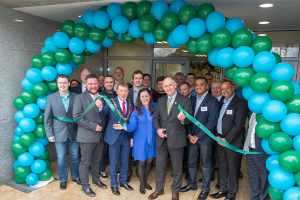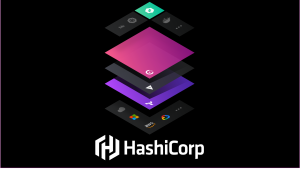Inside Nimble’s cloud analytics op | #CubeConversations
![]() Solid-state memory offers a number of compelling advantages over traditional disk, but when there are dozens of different vendors all touting the same value proposition, it becomes much more difficult for CIOs to cut through the jargon. It’s even harder for the suppliers themselves, especially newer players such as hybrid array maker Nimble Storage, which is going against larger and better-established names that already have organizations’ trust.
Solid-state memory offers a number of compelling advantages over traditional disk, but when there are dozens of different vendors all touting the same value proposition, it becomes much more difficult for CIOs to cut through the jargon. It’s even harder for the suppliers themselves, especially newer players such as hybrid array maker Nimble Storage, which is going against larger and better-established names that already have organizations’ trust.
Yet despite the tremendous challenges, the company managed to break away from the crowd and settle on a stable growth trajectory that culminated in an expectation-breaking stock market market last December. Rodd Bagg, the vice president of support at Nimble, credits much of that success to his firm’s early focus on hardware instrumentation. He appeared in a recent episode of our CubeConversation series to share what that means for practitioners with SiliconANGLE founder John Furrier.
Deep-diving into the data for better business results
Every day, Nimble collects between 30 to 100 million data points from each individual array in its vast install base into centralized cloud-based repository Bagg referred to as the “stats library”. The system constitutes the backend of the company’s Storage InfoSight platform, a managed service that pushes that information back down to customers in the form of useful insights about the health of their storage environments. The tool provides much-needed visibility into metrics that Bagg said practitioners have not had access in the past and are becoming more important by the day.
“As an environment gets more and more complex, and there’s more and more demand on the storage, you just need that transparency,” he explained . “A lot of our customers tell us that with other storage devices they’ve used in the past, they haven’t had that kind of transparency, it was a mystery to them, so we opened that up.”
On top of shedding light on system performance, InfoSight automatically spots operational gaps and generates what Bagg described as “detailed instructions” on how to bring a deployment – be it an individual array or an entire environment – up to par with Nimble’s best practices. And that’s only the beginning, he said. The platform also utilizes a set of advanced predictive algorithms to map out usage trends and identify potential problems before they occur.
That capability is applied mainly to alert organizations when they have to add more capacity before that need turns into a bottleneck which bogs down the entire stack, but Bagg said it can be just as useful in other parts of the data center.
“It might be the simple things like needing more cache but it can be a lot more complex. We do correlation analysis around the environment and what’s happening there: we may uncover a network issue in InfoSight that allows the storage guys to get an alert that there’s an issue in the network causing the database problems,” he detailed.
- “Drinking our own champagne”
Nimble is putting the data is collects from customer deployments to good use internally as well, according to Bagg. The company recently rolled out a sizing tool for its salespeople that taps into stats library to calculate the optimal configuration for any given set of workloads, he said. That functionality allows representatives to provide an accurate assessment of how many and what kind of arrays a prospect needs based on details they can give over the phone, which streamlines the onboarding process by a great deal.
More automation, less troubleshooting
The fact InfoSight eliminates much of the manual work involved in managing and monitoring storage environments not only makes life easier for users but Nimble’s support organization as well, Bagg highlighted. Not having to wrangle with mundane tasks such as best practice enforcement has enabled his team to do away with the traditional tiered structure of care centers in favor of a much simpler setup wherein the engineer who handles the first call stays with the customer until the issue is resolved, he said.
That approach has saved untold amounts of time and effort for both users and Nimble itself, but implementing it was a challenge. The company serves organizations all over the world, Bagg pointed out, which required establishing a local presence in multiple regions outside North America in order to maintain the level of service they have come to expect.
“Because we’re only hiring very senior people, it’s difficult to hire senior people in Silicon Valley that are gonna work through the night. But you can get great top talent when they’re allowed to work 9AM through 5PM,” he explained. “So we have support centers around the world so that everybody is working regular daylight hours and it’s seamless from that perspective.”
A message from John Furrier, co-founder of SiliconANGLE:
Your vote of support is important to us and it helps us keep the content FREE.
One click below supports our mission to provide free, deep, and relevant content.
Join our community on YouTube
Join the community that includes more than 15,000 #CubeAlumni experts, including Amazon.com CEO Andy Jassy, Dell Technologies founder and CEO Michael Dell, Intel CEO Pat Gelsinger, and many more luminaries and experts.
THANK YOU











